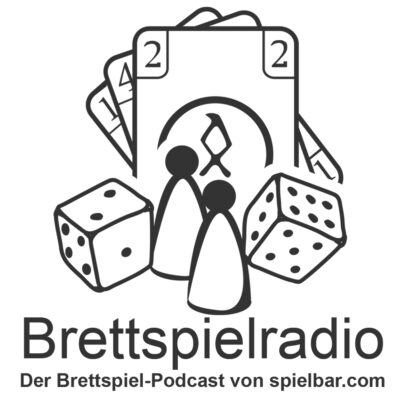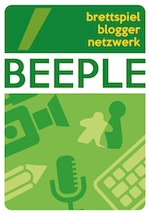Update: Asmodee Deutschland hat sich bei mir zu Wort gemeldet: „Asmodee agiert ausschließlich als Distributor des von Marektoy veröffentlichten Spiels Drunken / Sunken Sailor. Asmodee wird sich bemühen, Kontakt zwischen Marektoy und Oink Games herzustellen.“ Ich hoffe es klappt da zumindest einen Kompromiss zu finden – denkbar wäre, dass Marektoy als „Vermittler“ bezahlt wird und Jun Susuki als Autor. Sobald ich neues weiß, gibt es ein weiteres Update!
Update 2: Jun Sunsuki hat per Twitter bekannt gegeben, dass Asmodee in Zukunft darauf verzichten wird Drunken Sailor zu produzieren. Damit ist das Plagiat nicht au der Welt, aber zumindest hat es nicht mehr die Vervreitung und ein Zeichen hat Asmodee damit auch gesetzt.
Update 3: Marektoy hat sich bei mir per Email gemeldet. Sie schreiben mir, dass sie die Plagiatsvorwürfe sehr ernst nehmen und haben mir folgendes Statement, dass sie Oink Games geschickt haben, weitergeleitet: „As I was personally involved in the development process of Drunken Sailor, I can say that the statement of us copying your idea is false. I do see the similarities between the games, but I can with all honesty say that I had never played nor seen a copy of your game A Fake Artist Goes To New York when working on Drunken Sailor.
The development process of Drunken Sailor was inspired by some games in the genre of hidden identity games and drawing games, but no direct influence was taken from A Fake Artist Goes to New York. Our biggest influence must have been Spyfall and we wanted to make something a bit similar, but with sailor stories and drawing. I hope you can see that by combining Spyfall with stories and drawing you can easily end up in Drunken Sailor.
The fact that we have some rules which are the same (continuous line and 2 rounds), is either a share coincidence, but more likely a matter of ending up to the same conclusion when working on a similar problem. I find this something quite natural and happens in all fields of creative development, but especially in party games, where the ideas tend to be simple and the intention is to keep them as intuitive as possible.
The third thing which has been raised up as a „clear proof“ of copying is scoring, which I agree is almost identical (the difference being that if Drunken Sailor stays hidden, the players pointing at him will still score one point). Anyway, I will use this as an example as I remember the decision process very well since we had some internal disputes over this matter. For a long time, we were planning to leave the scoring out of the game completely as we didn’t think people would really need it and on the other hand we felt that the game was not completely in balance as we felt it was harder to win as a Drunken Sailor. After playtesting, we received feedback that it would be nice to have some sort of scoring and to be able to play multiple rounds and we decided to make the most simple scoring we could come up with. We would have kept it 1 point in each scenario, but as it seemed that Drunken Sailor was less likely to stay hidden, we decided to double the points to 2. For some time, we were also discussing whether it should be 2 and 3 points (as this was closer to the winning data from our test sessions), but for the sake of simplicity, we stuck to 1 and 2 points scoring. I would guess that your decision process for scoring was somewhat similar.
Lastly, I want to highlight that despite the similarities, there are significant differences between the games:
– Predetermined secret words. This was a clear development decision to make the game as easily approachable as possible. We also decided to go with a strong theme and have all the secret words related to this theme. These were active decisions we took as we felt it improved the game and made it a bit easier for the Drunken Sailor. On many occasions, I have also noticed that people are stating that Drunken Sailor would be played through after 27 rounds, which clearly is not true. In my opinion, the game only gets better when players are familiar with the secret words and they need to get more creative to avoid Drunken Sailor guessing the secret word. This changes the dynamics a lot compared to A Fake Artist goes to New York.
– Stories included in the game. This was a big thing for us in the development of the game. To me, a game is always an experience not just a set of rules. The stories were added to bring flavor and make the game experience deeper.
– No game master in Drunken Sailor. Game master and pretender form a team in Fake Artist goes to New York and this changes the dynamics of the game. The game master can make it easy or hard, but if the game master is trying to optimize his points he can choose a suggestive theme connected to the secret word (for example Tool and Hammer). These dimensions of the game are not included in Drunken Sailor.
On top of that, the theme, components, and look of the games are entirely different. For me, the above-mentioned differences make Drunken Sailor stand out as an original title, even after playing Fake Artist goes to New York earlier this year.
Looking at the topic from a broader perspective, I feel it’s important to also raise the question of how much can one own a game mechanic? For many, it is clear that if you invent a new game mechanic you can take the credit for it, but at the same time you need to accept that other people might be using the same mechanic, developing it and even taking it to a direction you don’t like.
For the avoidance of any doubt, I do not approve of copying and plagiarism. But in many cases, things are not as black and white as simultaneous inventions happen and even the line between plagiarism and evolving an idea/being inspired is usually everything but clear.
I hope this message helps you to understand our perspective and puts an end to the doubts of plagiarism.“
Kurz zusammengefasst: Er beruft sich auf eine Parallelentwicklung, die nur zufällig die von mir dargestellten identischen Regeln beinhaltet. Da ja das Spiel zudem Abweichungen enthält, könnte es kein Plagiat sein (Das ist rechtlich nicht so klar). Ich gebe das mal ohne weiteres Kommentar so weiter.
Essen eröffnet in wenigen Wochen seine Türen und Verlage kündigen neue Spiele an. So hat Asmodee Drunken Sailor dabei: Ein Spiel bei dem alle Spieler gemeinsam an einem Begriff zeichnen, denn sie alle kennen – alle bis auf einen. Der versucht sich irgendwie durchzuschummeln. Hat jeder zweimal eine durchgehende Linie gezeichnet, zeigen alle Spieler auf Kommando auf denjenigen, von dem sie meinen, dass er den Originalbegriff nicht kannte. Wurde der „Pretender“ richtig erkannt, kann er sich quasi retten, wenn er den Begriff errät, den alle zeichnen sollten.
Wem die Beschreibung bekannt vorkommt: Diese Regeln sind bis in kleinste Detail (durchgehende Linie, Jeder zeichnet zweimal) mit Fake Artist goes to New York von Oink Games identisch. Es gibt nur einen Unterschied: Es gibt dieses Mal keinen Oberbegriff, den alle kennen, denn die zu zeichnenden Begriffe sind bereits fertig in der Schachtel. Man spart sich also den Spielleiter, kann das Spiel dafür aber nur 27 Runden spielen, denn mehr Begriffe gibt es wohl nicht. Die Punktwertung ist identisch mit der aus Fake Artist (in meiner Ausgabe gab es noch keine Punktwertung, in der aktuellen Fassung schon). Natürlich ist die thematische Einkleidung eine andere (statt um einen Künstler, geht es jetzt um betrunkene Seeleute) und das Material ist etwas aufwendiger.
Die Frage ist: Ist die einzige Änderung – Statt eines Spielleiters gibt es jetzt fertige Karten – genug, um von einem eigenständigen Spiel zu sprechen? Kaum. Material und Geschichte berühren die Spieldramaturgie, die „Fabel“ nicht. Grundsätzlicher Ablauf ist derselbe, mit der Ausnahme des wegfallenden Spielleiters, desen Rolle jetzt quasi schon vom Werk übernommen wurde. Das ist nicht mehr als eine redaktionelle Bearbeitung des Grundspieles und damit ganz klar ein Plagiat. Rein formaljuristisch wäre die einzige Frage: Ist die Schöpfungshöhe von Fake Artist hoch genug um Urheberrechtsschutz zu genießen? Da bin ich mir unsicher, gerade aufgrund des „Pen&Paper“-Charakters von Fake Artist. Wie hier schon häufiger besprochen sind gerade die kleinen Ideen schwer zu schützen. Auf der anderen Seite hat Fake Artist meines Wissens das Genre der Pretender-Spiele begründet und damit eine ziemlich hohe schöpferische Leistung vollbracht. Ob ein Gericht das aber auch so sieht, mag ich nicht einzuschätzen. Klar ist aber, dass selbst kleine Regeln wie die Punkte 1:1 übernommen wurden. Eine Parallelentwicklung scheidet daher aus.
Drunken Sailor ist die Deutsche Ausgabe von Sunken Sailor des finnischen Spielzeugmachers Marektoy/Competo (Die in der Anleitung angegebene Webadresse von Competo ist falsch), die vor allem für Klask und Bonk bekannt sind – zwei Geschicklichkeitsspiele, die ebenfalls auf anderen Spielen beruhen. Nun beruht Klask auf traditionellen Spiel wie Kicker (Bonk kenne ich nicht, daher weiß ich nicht, wie eng es an Hungry Hippos dran ist), da ist die Sache also kein Problem. Anders hier, wo offensichtlich mit demselben Verve ein Autorenspiel ohne Wissens des Urhebers bearbeitet wurde. In den USA scheint Buffallo Games (laut BGG) für den Vertrieb zuständig zu sein.
Asmodee hat Drunken Sailor nun für den Deutschen Markt lizensiert, wobei ich vermute, dass die Verantworlichen dort nicht wussten, dass es ein Plagiat ist. Das ist eine blöde Situation auch für sie: Wie geht man mit dem Fall um? Kommerziell dürfte der Impakt gering sein, denn außerhalb unserer Blase kennt kaum einer das Original und achtet auch weniger auf Urheberrechtsproblematiken. Doch für den Ruf und potentiell auch den Umgang mit anderen Lizenznehmern ist ein Plagiat im Verlagsprogramm sicherlich nicht förderlich. Schon aus Eigeninteresse sollte Asmodee sich an Marektoy wenden und entweder auf eine Lizensierung verzichten oder besser noch auf eine Beteiligung von Oink Games drängen. Vielleicht ist ja eine nachträgliche Lizensierung möglich – vermutlich aber nur wenn Asmodee Druck ausübt. Marektoy hat zumindest bislang offenbar keinen Versuch unternommen, Fake Artist zu lizensieren. Wenn ich ein Spiel bei einem Verlag herausbringe, muss ich übrigens immer unterschreiben, dass ich auch der Autor bin und kein Spiel kopiert habe – Ich frage mich, ob Marektoy ähnliches für den Lizenzvertrag unterschrieben hat, denn das wäre dann durchaus juristisch angreifbar.
Oink versucht mit kleinen, pfiffigen Ideen einen Verlag aufzubauen, der international tätig wird. Wenn dessen Spiele nicht lizensiert, sondern plagiiert werden, ist dies auf Dauer nicht möglich. War Insider noch ein Grenzfall oder möglicherweise auch nur schlechte Informationspolitik, ist das hier ein klares Plagiat, wo ein Verlag mit (dank Klask) großer Reichweite und internationalen Kontakten (Marektoy) einen kleineren einfach beiseite schiebt. Und sowas ist nicht nur ärgerlich für die Geschädigten, es höhlt auch den Urheberschutz für Spiele defacto aus.
ciao
peer
(P.S.: Hier ein kurzer Hinweis auf die Schlagwörter an der Seite, die man anklicken kann, um mehr übers Urheberrecht zu erfahren).
- Jenseits des Tellerrandes: Delicious in Dungeon - 14. April 2024
- Zielführende Überlegungen - 24. März 2024
- Spaß is just a four letter word - 10. März 2024






